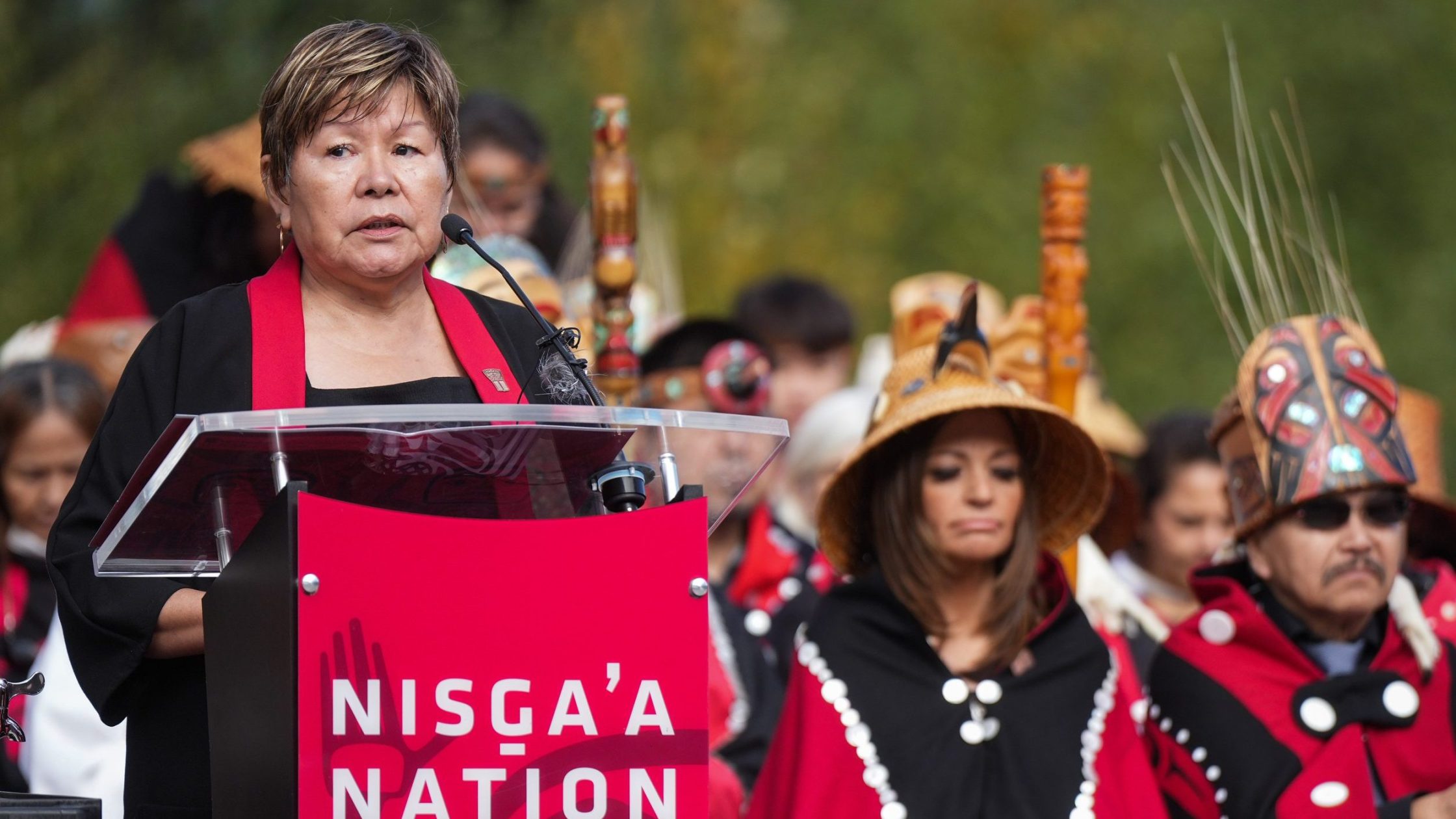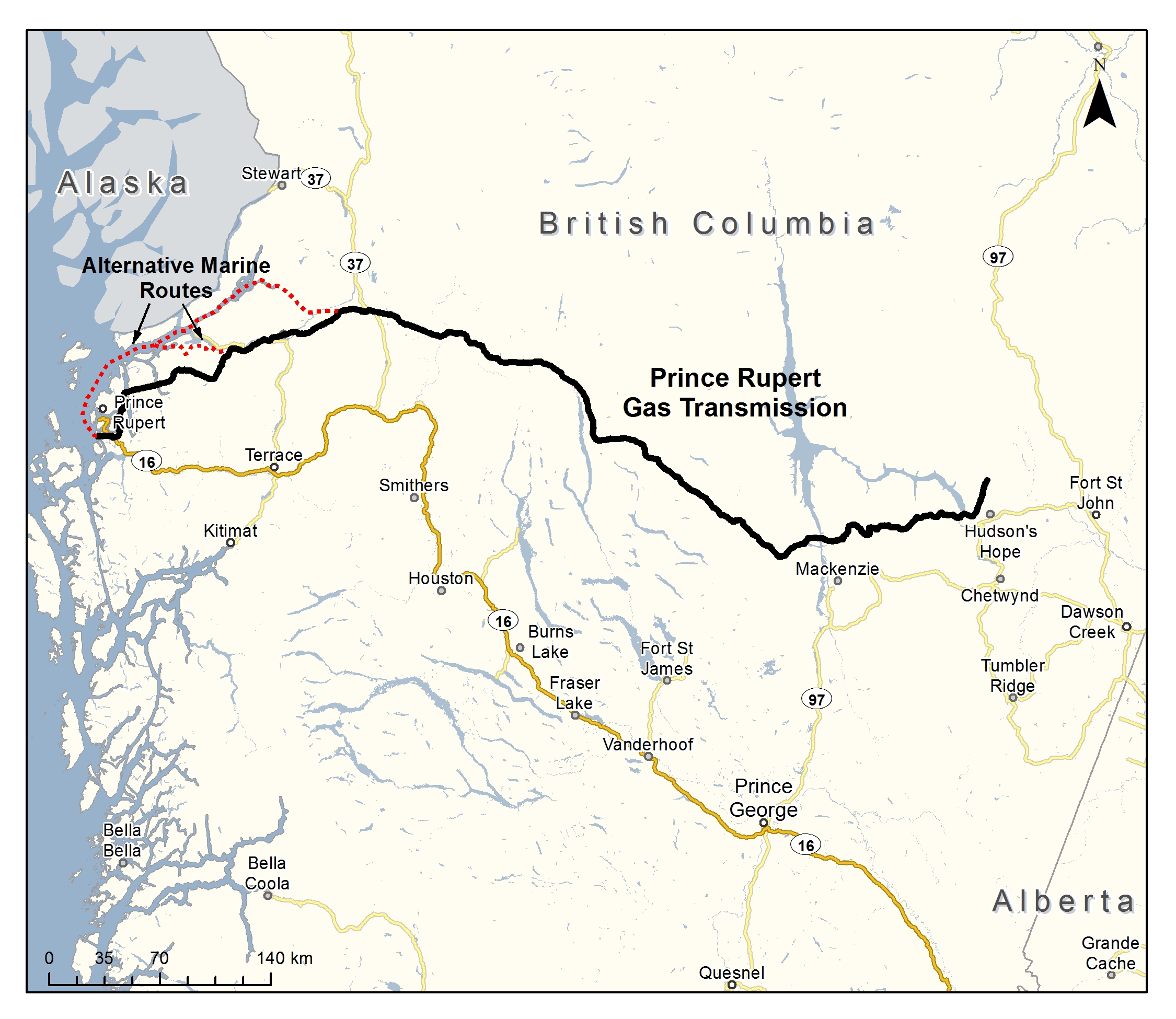Momentum continues building for Indigenous-led Canadian liquefied natural gas (LNG), with a second project securing a pipeline connection.
The Nisga’a Nation, a small coastal community near B.C.’s border with Alaska, announced earlier this month it will purchase TC Energy’s Prince Rupert Gas Transmission project along with partner Western LNG.
It’s a turning point for the proposed Ksi Lisims LNG project, particularly because the pipeline has all the permits it needs to go ahead, said market analyst Ian Archer.
“Buying this asset, a permitted and ready-to-build natural gas pipeline, puts control in the hands of the project’s partners,” said Archer, S&P Global’s associate director for gas, power and climate solutions.
“The Nisga’a Nation and Western LNG now have control over the timeline and development of their proposed development. It’s a great day for them and the LNG industry in B.C.”
The purchase comes after years of uncertainty for the proposed 900-kilometre pipeline, which would run from Hudson’s Hope in northeast B.C. to Lelu Island, near Prince Rupert.
It was originally supposed to supply the $36-billion Pacific NorthWest LNG project, which was cancelled in 2017.
In 2014, the Nisga’a Nation signed an agreement for construction of the pipeline through its traditional lands. Today, Nisga’a president Eva Clayton says becoming an owner of the project ensures it will provide even greater benefits.
Nisga’a Nation and Western LNG to purchase PRGT natural gas projecthttps://t.co/jPVDa3jzQP pic.twitter.com/Er6ugtTlkV
— NLG - Nisga'a Nation (@NLGNisgaaNation) March 14, 2024
“This means more training, more priority hiring, more contracts and procurement for our workers and businesses, and more investment in our nation,” Clayton said.
“It is a historic development, and an opportunity for us to create a better quality of life for our children and grandchildren here in the Nass – and for First Nations all along the pipeline route.”
Ksi Lisims is a proposed floating facility with capacity to export 12 million tonnes of LNG per year. It is owned by the Nisga’a Nation, Western LNG, and Rockies LNG – a consortium that includes some of Canada’s largest natural gas producers.
Archer, who has spent more than 20 years analyzing the energy sector, sees the partnership as a template for the future.
“The trend now is Indigenous participation in energy developments is seen as a given as opposed to just engagement or consultation with communities,” he says.
“There is a recognition by both energy producers and Indigenous communities that they have a vested interest in exploring and participating in partnerships to responsibly develop oil and gas and build critical infrastructure to support that. That trend will continue to grow because it makes sense for everybody.”
The momentum is building for Ksi Lisims – which also recently signed on Shell as a long-term LNG buyer and filed its regulatory application for an environmental certificate – hot on the heels of Cedar LNG, another Indigenous-led project on the B.C. coast.
Cedar LNG, owned jointly by the Haisla Nation and Pembina Pipeline Corporation, has regulatory approval to proceed and is preparing for construction to start. A final investment decision is expected by the middle of this year.
Cedar’s pipeline is already in the ground. It will be served by Coastal GasLink, a 670-kilometre pipeline from northeast B.C. to Kitimat that was completed late last year.
The project was built primarily to feed the LNG Canada terminal, which is now more than 85 per cent complete.
Less than a kilometre of connecting pipeline – called Cedar Link – would need to be built to get gas flowing to the Indigenous-owned Cedar LNG project.
Given the appetite for LNG for potential customers in Asia (expected to drive a nearly 70 per cent increase in global demand through 2040), Clayton sees Ksi Lisims as key for providing opportunities for her community.
“For far too long, First Nations could only watch as others built generational wealth from the resources of our traditional lands. But times are changing. Our ownership role in this pipeline signals a new era for Indigenous participation in Canada’s economy.”
The unaltered reproduction of this content is free of charge with attribution to Canadian Energy Centre Ltd.


